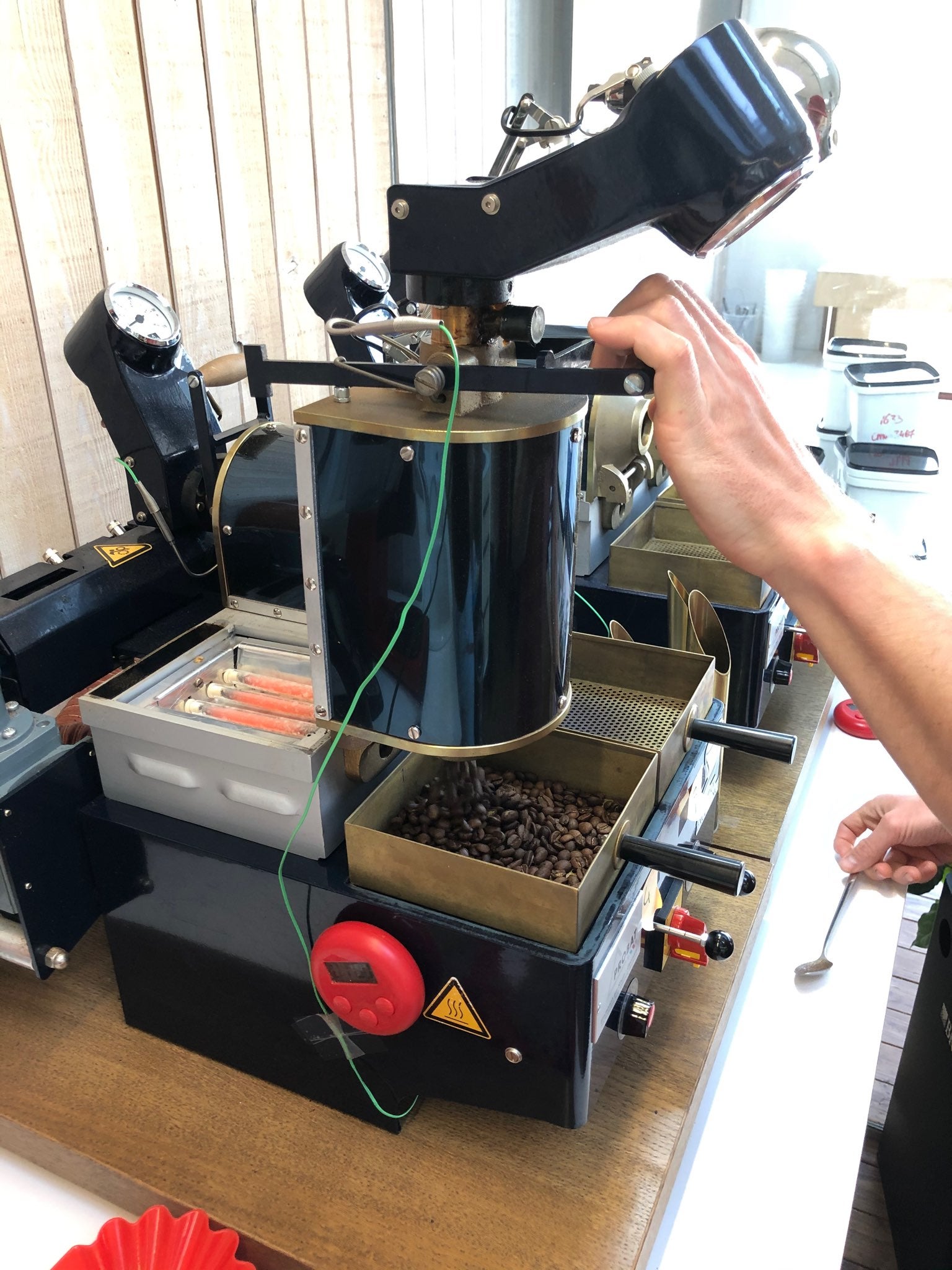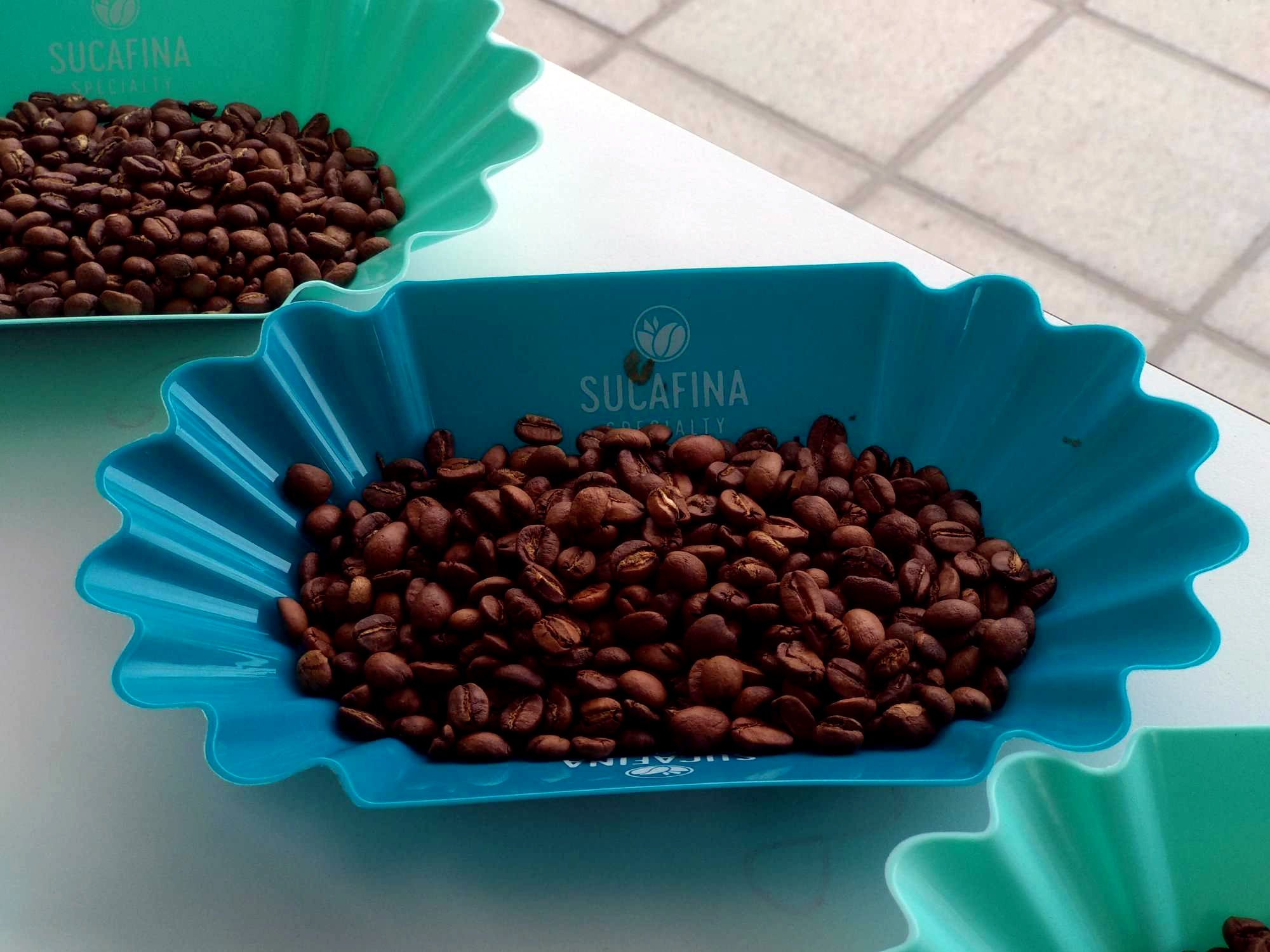From the Lab, Resources for Roasters
Monday, May 4, 2020
Sample Roasting Fundamentals
Last week, Jasper discussed the three principles underlying our sample roasting theory. In this new article, we’ll talk about how we apply our first principle, transparency, in sample roasting by adjusting gas, charge temperature and airflow.

Jasper de Clerck is a core member of our Antwerp QC team. He’s been working in coffee for many years and has extensive experience as a production roaster. We know you’re all involved in production roasting regularly but sample roasting is an entirely different kettle of fish. Jasper’s here to share his knowledge of sample roasting from the perspective of someone who’s done extensive production nand sample roasting. Over the next weeks, Jasper will be laying down some wisdom and some hard-earned truths about these differences.
Last week, Jasper discussed the three principles underlying our sample roasting theory. In this new article, we’ll talk about how we apply our first principle, transparency, in sample roasting by adjusting gas, charge temperature and airflow.

To clarify, when we talk about transparency in this context, we mean that our sample roasting is “revealing a coffee’s true nature.” That’s why we try to keep our roast profiles as low-intervention as possible. The goal is to fully develop the coffee without altering the flavor. Sample roasting should allow us to see all the characteristics of a given coffee, whether they’re pleasant or not.
While we seek a constant, repeatable profiles, we obviously need to alter our roasts from time to time, to fit each individual coffee (more on that soon). When developing and tailoring profiles, we focus on three main parameters: gas, charge temperature and airflow. Gas and charge temperature help decide how to start the roast, and airflow helps guide ending the roast.
Gas
In our profiles, the gas setting is mainly used to influence the first parts leading up to and going into first crack. We typically only adjust the gas after first crack has begun.
In our roasting approach, the amount of gas we use depends on how ‘hard’ or ‘fast’ we want to enter first crack. If we want a fast, rolling crack with a lot of energy, we use a high gas setting and drop the coffee somewhere between 40 and 50 seconds after the start of first crack.
If we want a ‘softer,’ slower and more spread-out crack, we can use a lower gas setting and let the coffee crack for about 1 to 1¼ minutes.
Charge Temperature
Just as we use the gas setting to influence the end of the roast, we can also use the charge temperature to influence the start of the roast.
When using a high charge, the roast will start with more initial thermal energy, which will give the total roast more momentum. If we start at a lower charge temp, we will have less thermal momentum and therefore, a slower start.
Varying charge temperature can be very useful when working with coffees with very low or very high moisture contents. For example, for a sample with a very high moisture, starting with a higher charge temperature can counter the strong evaporative shield—where evaporating moisture slows the transfer of heat to the beans—that it will create in the initial phase of roasting.
The opposite is true for a sample with low moisture; we start with a lower charge to avoid damaging the drier beans with too much initial heat.
Gas & Charge Temperature
We can adjust combinations of charge temperature and gas to adjust roast time. If we want a coffee to crack very hard but in a slow roast, we have to charge lower with high gas. And if we want a fast roast with a soft, elongated crack, we have to charge high with low gas.
In the example of roasting a coffee with very high moisture, we know that these coffees strongly resist heat at the start of the roast due to the evaporative shield. However, once most of the moisture is gone, the beans start to heat up very quickly. When the moisture is gone, these beans will suddenly become very brittle and be prone to scorching and other roasting defects.
Keeping in mind that we do not want to change the gas setting mid-roast because it will react too slowly and be inconsistent. To counter this, we can use the combination of a very high charge temperature with a low gas setting.
The high charge will give us enough thermal momentum to resist the moisture coming from the beans and speeding up the roast time, while the low gas setting will avoid the roast taking off too quickly after the beans have mostly dried. Low gas will also make sure we get no scorching in the latter part of the roast.
On the opposite end of the spectrum, a sample with lower moisture will need a lower charge temperature to avoid too much momentum at the start, but higher gas keeps roast going after the initial phase. Coffees with lower moisture can also stand a bit more heat later in the roast if the thermal energy at the start was not too high.
Airflow
When we sample roast, we use airflow for 2 main purposes: it keeps the roast on track and removes smoke and chaff during first crack. Airflow helps keeps the roast on track by impacting temperature and conductivity of heat, both of which affect the overall development time during the roast
To keep the roast on track when it is going too fast, we use more airflow to slightly lower the conduction of heat to the coffee and to allow more cold air to enter the roasting chamber. When the roast moves too slowly, we do the opposite.
At the start of first crack, we fully open the airflow to get rid of any smoke or moisture being released from the beans. We have to very careful here to not be too aggressive if the beans are not in a rolling crack, as too much airflow (and thus too much cold air in the chamber) without enough momentum in the crack can stall the roast without fully developing it.

When we consider all three variables—gas, charge temperature and airflow—we can adjust our profiles to find the most transparent roast for all of the coffees we sample roast. In the coming weeks, we’ll talk more about how these variables play out in our different profiles.
In the meantime, we think you might enjoy this article from the vaults about the chemistry behind coffee processing.
If you haven’t seen it yet, why not catch up on the first installment?